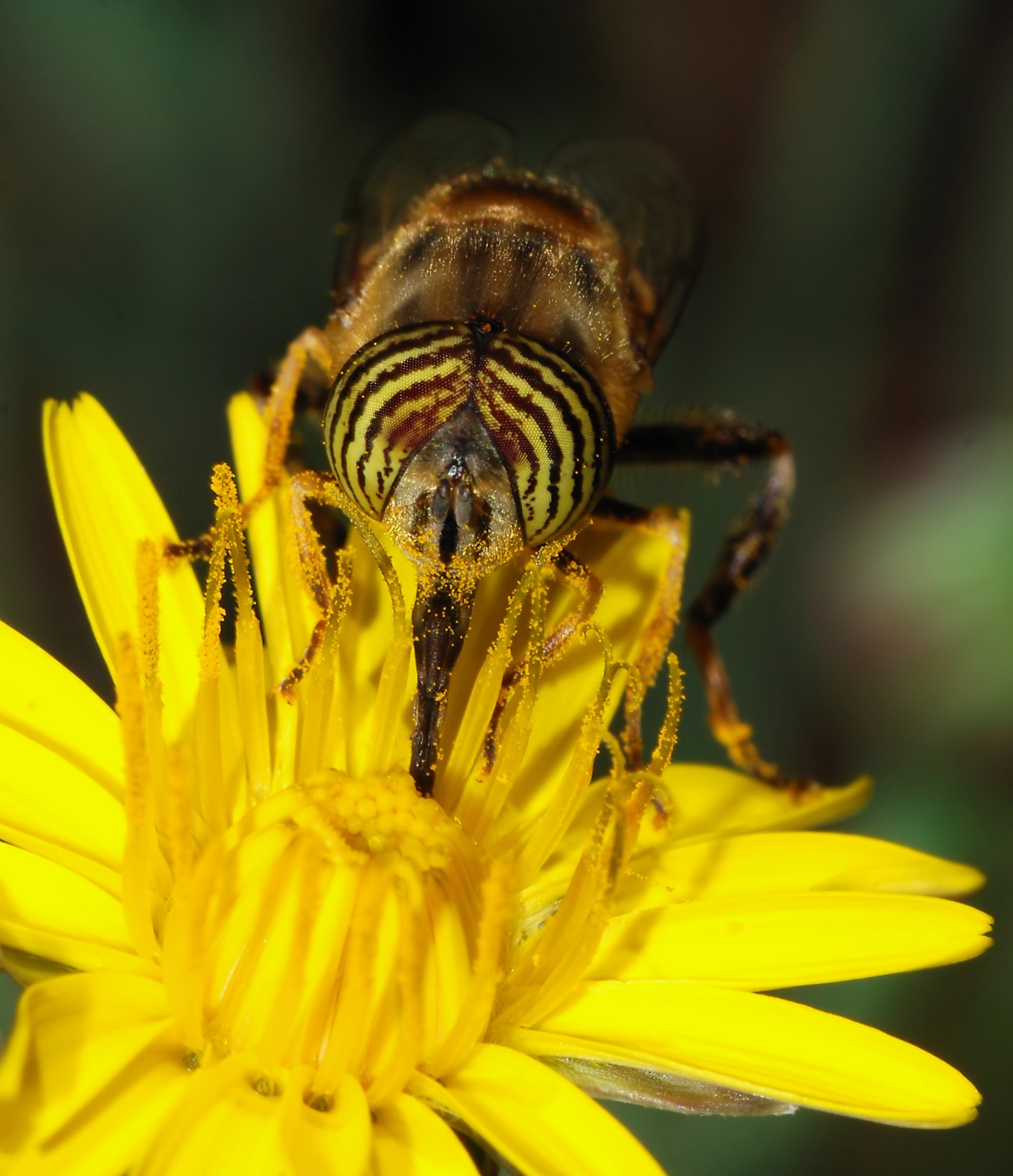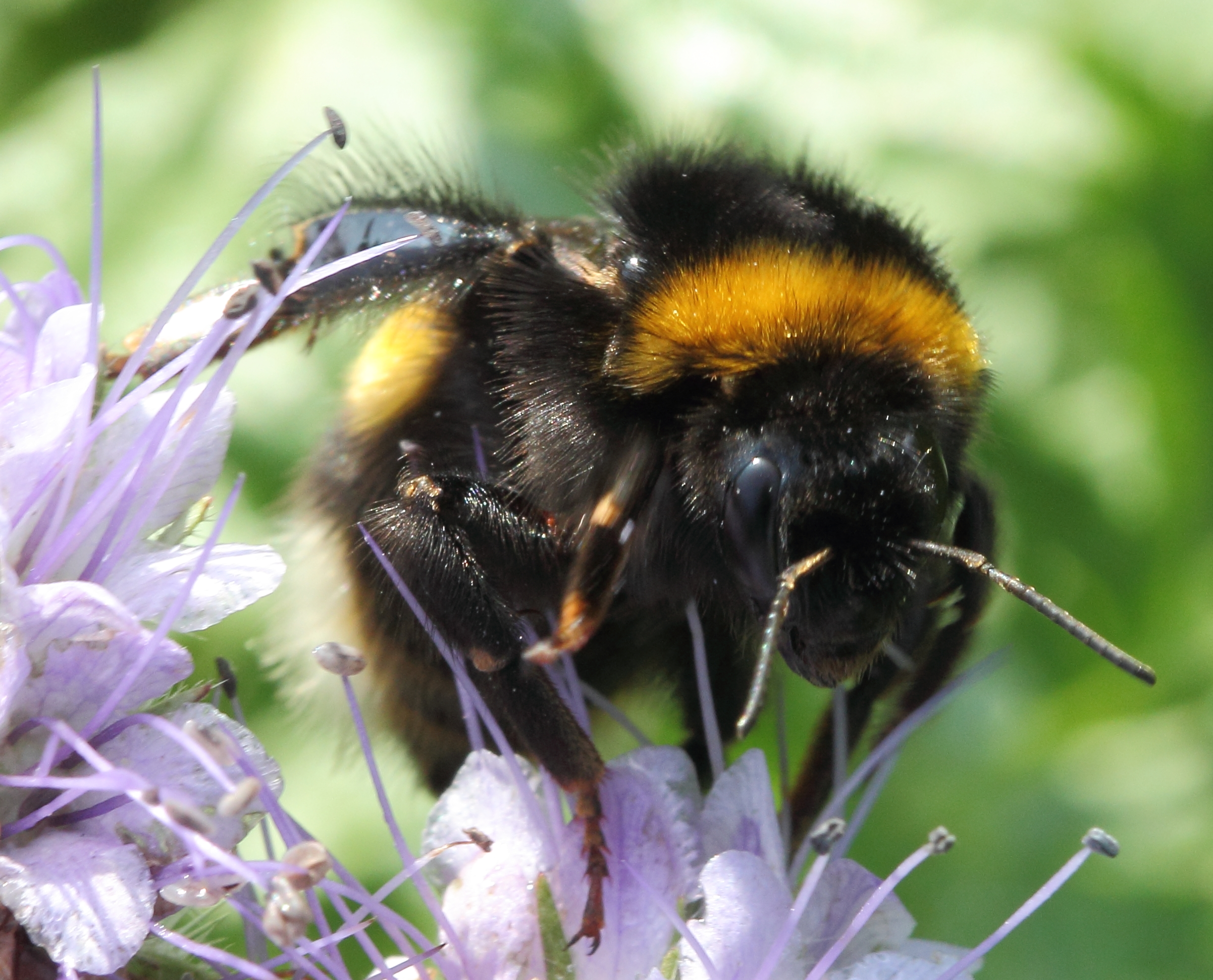|
Flower Constancy
Flower constancy or pollinator constancy is a behavior of pollinators wherein an individual exclusively visits a single flower species or morph to the exclusion of other flowers from which it could obtain resources. Constancy is distinct from specialization, where the pollinator is evolved such that it can only derive resources from a few species. Constancy is also not a fixed preference; the same individual may exhibit constancy for different flowers on different bouts of foraging. This type of foraging behavior puts selective pressures on floral traits in a process called pollinator-mediated selection. Flower constancy is different from other types of insect specialization such as innate preferences for certain colors or flower types or focusing foraging effort on the most rewarding flowers. Flower constancy has been observed for insect pollinators: especially honeybees (''Apis mellifera''), a bumblebee ('' Bombus terrestris''), and a butterfly ('' Thymelicus sylvestris''). F ... [...More Info...] [...Related Items...] OR: [Wikipedia] [Google] [Baidu] |
Pollinators
A pollinator is an animal that moves pollen from the male anther of a flower to the female stigma of a flower. This helps to bring about fertilization of the ovules in the flower by the male gametes from the pollen grains. Insects are the major pollinators of most plants, and insect pollinators include all families of bees and most families of aculeate wasps; ants; many families of flies; many lepidopterans (both butterflies and moths); and many families of beetles. Vertebrates, mainly bats and birds, but also some non-bat mammals (monkeys, lemurs, possums, rodents) and some lizards pollinate certain plants. Among the pollinating birds are hummingbirds, honeyeaters and sunbirds with long beaks; they pollinate a number of deep-throated flowers. Humans may also carry out artificial pollination. A pollinator is different from a pollenizer, a plant that is a source of pollen for the pollination process. Background Plants fall into pollination syndromes that reflect the type ... [...More Info...] [...Related Items...] OR: [Wikipedia] [Google] [Baidu] |
Flower
Flowers, also known as blooms and blossoms, are the reproductive structures of flowering plants ( angiosperms). Typically, they are structured in four circular levels, called whorls, around the end of a stalk. These whorls include: calyx, modified leaves; corolla, the petals; androecium, the male reproductive unit consisting of stamens and pollen; and gynoecium, the female part, containing style and stigma, which receives the pollen at the tip of the style, and ovary, which contains the ovules. When flowers are arranged in groups, they are known collectively as inflorescences. Floral growth originates at stem tips and is controlled by MADS-box genes. In most plant species flowers are heterosporous, and so can produce sex cells of both sexes. Pollination mediates the transport of pollen to the ovules in the ovaries, to facilitate sexual reproduction. It can occur between different plants, as in cross-pollination, or between flowers on the same plant or even the same f ... [...More Info...] [...Related Items...] OR: [Wikipedia] [Google] [Baidu] |
Generalist And Specialist Species
A generalist species is able to thrive in a wide variety of environmental conditions and can make use of a variety of different resources (for example, a heterotroph with a varied diet). A specialist species can thrive only in a narrow range of environmental conditions or has a limited diet. Most organisms do not all fit neatly into either group, however. Some species are highly specialized (the most extreme case being monophagous, eating one specific type of food), others less so, and some can tolerate many different environments. In other words, there is a continuum from highly specialized to broadly generalist species. Description Omnivores are usually generalists. Herbivores are often specialists, but those that eat a variety of plants may be considered generalists. A well-known example of a specialist animal is the monophagous koala, which subsists almost entirely on eucalyptus leaves. The raccoon is a generalist, because it has a natural range that includes most of Nor ... [...More Info...] [...Related Items...] OR: [Wikipedia] [Google] [Baidu] |
Pollinator-mediated Selection
Pollinator-mediated selection is an evolutionary process occurring in flowering plants, in which the foraging behavior of pollinators differentially selects for certain floral traits. Flowering plant are a diverse group of plants that produce seeds. Their seeds differ from those of gymnosperms in that they are enclosed within a fruit. These plants display a wide range of diversity when it comes to the phenotypic characteristics of their flowers, which attracts a variety of pollinators that participate in biotic interactions with the plant. Since many plants rely on pollen vectors, their interactions with them influence floral traits and also favor efficiency since many vectors are searching for floral rewards like pollen and nectar. Examples of pollinator-mediated selected traits could be those involving the size, shape, color and odor of flowers, corolla tube length and width, size of inflorescence, floral rewards and amount, nectar guides, and phenology. Since these types of trait ... [...More Info...] [...Related Items...] OR: [Wikipedia] [Google] [Baidu] |
Insect
Insects (from Latin ') are Hexapoda, hexapod invertebrates of the class (biology), class Insecta. They are the largest group within the arthropod phylum. Insects have a chitinous exoskeleton, a three-part body (Insect morphology#Head, head, Thorax (insect anatomy), thorax and abdomen (insect anatomy), abdomen), three pairs of jointed Arthropod leg, legs, compound eyes, and a pair of antenna (biology), antennae. Insects are the most diverse group of animals, with more than a million described species; they represent more than half of all animal species. The insect nervous system consists of a insect brain, brain and a ventral nerve cord. Most insects reproduce Oviparous, by laying eggs. Insects Respiratory system of insects, breathe air through a system of Spiracle (arthropods), paired openings along their sides, connected to Trachea#Invertebrates, small tubes that take air directly to the tissues. The blood therefore does not carry oxygen; it is only partly contained in ves ... [...More Info...] [...Related Items...] OR: [Wikipedia] [Google] [Baidu] |
Honeybees
A honey bee (also spelled honeybee) is a eusocial flying insect within the genus ''Apis'' of the bee clade, all native to mainland Afro-Eurasia. After bees spread naturally throughout Africa and Eurasia, humans became responsible for the current cosmopolitan distribution of honey bees, introducing multiple subspecies into South America (early 16th century), North America (early 17th century), and Australia (early 19th century). Honey bees are known for their construction of wiktionary:perennial, perennial Colony (biology), colonial nests from Beeswax, wax, the large size of their colonies, and surplus production and storage of honey, distinguishing their hives as a prized foraging target of many animals, including honey badgers, bears and human hunter-gatherers. Only 8 surviving species of honey bees are recognized, with a total of 43 subspecies, though historically 7 to 11 species are recognized. Honey bees represent only a small fraction of the roughly 20,000 known species ... [...More Info...] [...Related Items...] OR: [Wikipedia] [Google] [Baidu] |
Bombus Terrestris
''Bombus terrestris'', the buff-tailed bumblebee or large earth bumblebee, is one of the most numerous bumblebee species in Europe. It is one of the main species used in greenhouse pollination, and so can be found in many countries and areas where it is not native, such as Tasmania. Moreover, it is a eusocial insect with an overlap of generations, a division of labour, and cooperative brood care. The queen is monogamous which means she mates with only one male. ''B. terrestris'' workers learn flower colours and forage efficiently. Taxonomy and phylogenetics ''B. terrestris'' is part of the order Hymenoptera, which is composed of ants, bees, and wasps. The family Apidae specifically consists of bees. It is also part of the subfamily Apinae. There are 14 tribe lineages within Apinae, and ''B. terrestris'' is in the bumblebee tribe, Bombini. It is in the genus ''Bombus'', which consists entirely of bumblebees, and the subgenus ''Bombus sensu stricto''. This subgenus contains close ... [...More Info...] [...Related Items...] OR: [Wikipedia] [Google] [Baidu] |
Thymelicus Sylvestris
The small skipper (''Thymelicus sylvestris'') is a butterfly of the family Hesperiidae. Appearance It has a rusty orange colour to the wings, upper body, and the tips of the antennae. The body is silvery white below, and it has a wingspan of 25–30 mm. This butterfly is very similar in appearance to the Essex skipper (''Thymelicus lineola''). In the small skipper, the undersides of the tips of the antennae are yellow orange, whereas they are black in the Essex skipper. The black area on the lower edge of the upper wings also differs. Like the other orange grass skippers, the male has a distinctive black stripe made up of scent scales. (MHNT) Thymelicus sylvestris - Foret de Bouconne, France - male dorsal.jpg, '' Thymelicus sylvestris'' ♂ (MHNT) Thymelicus sylvestris - Foret de Bouconne, France - male ventral.jpg, ♂ △ Distribution This butterfly's range includes much of Europe (east to the Urals, including Ireland, Britain and Scandinavia), north Africa and the ... [...More Info...] [...Related Items...] OR: [Wikipedia] [Google] [Baidu] |
Lars Chittka
Lars Chittka, FLS, FRES, FRSB (born April 1963) is a German zoologist, ethologist and ecologist distinguished for his work on the evolution of sensory systems and cognition, using insect-flower interactions as a model. Life and career Born in Germany, Chittka studied Biology at the Georg-August-Universität Göttingen and the Free University of Berlin. He obtained his PhD degree under the supervision of Randolf Menzel at the Free University of Berlin. Chittka is a recipient of the Royal Society Wolfson Research Merit Award and an Advanced Fellowship from the European Research Council (ERC). He is also member of the German National Academy of Sciences Leopoldina, an elected Fellow of the Linnean Society (FLS), the Royal Entomological Society (FRES) as well as the Royal Society of Biology (FRSB). He received the Lesley Goodman Award of the Royal Entomological Society in 2006. Lars Chittka has been an Editor of Biology’s foremost open access journal PLoS Biology since 2004, ... [...More Info...] [...Related Items...] OR: [Wikipedia] [Google] [Baidu] |
Adaptation
In biology, adaptation has three related meanings. Firstly, it is the dynamic evolutionary process of natural selection that fits organisms to their environment, enhancing their evolutionary fitness. Secondly, it is a state reached by the population during that process. Thirdly, it is a phenotypic trait or adaptive trait, with a functional role in each individual organism, that is maintained and has evolved through natural selection. Historically, adaptation has been described from the time of the ancient Greek philosophers such as Empedocles and Aristotle. In 18th and 19th-century natural theology, adaptation was taken as evidence for the existence of a deity. Charles Darwin and Alfred Russel Wallace proposed instead that it was explained by natural selection. Adaptation is related to biological fitness, which governs the rate of evolution as measured by changes in allele frequencies. Often, two or more species co-adapt and co-evolve as they develop adaptations tha ... [...More Info...] [...Related Items...] OR: [Wikipedia] [Google] [Baidu] |
Foraging
Foraging is searching for wild food resources. It affects an animal's fitness because it plays an important role in an animal's ability to survive and reproduce. Foraging theory is a branch of behavioral ecology that studies the foraging behavior of animals in response to the environment where the animal lives. Behavioral ecologists use economic models and categories to understand foraging; many of these models are a type of optimal model. Thus foraging theory is discussed in terms of optimizing a payoff from a foraging decision. The payoff for many of these models is the amount of energy an animal receives per unit time, more specifically, the highest ratio of energetic gain to cost while foraging. Foraging theory predicts that the decisions that maximize energy per unit time and thus deliver the highest payoff will be selected for and persist. Key words used to describe foraging behavior include ''resources'', the elements necessary for survival and reproduction which have a l ... [...More Info...] [...Related Items...] OR: [Wikipedia] [Google] [Baidu] |






